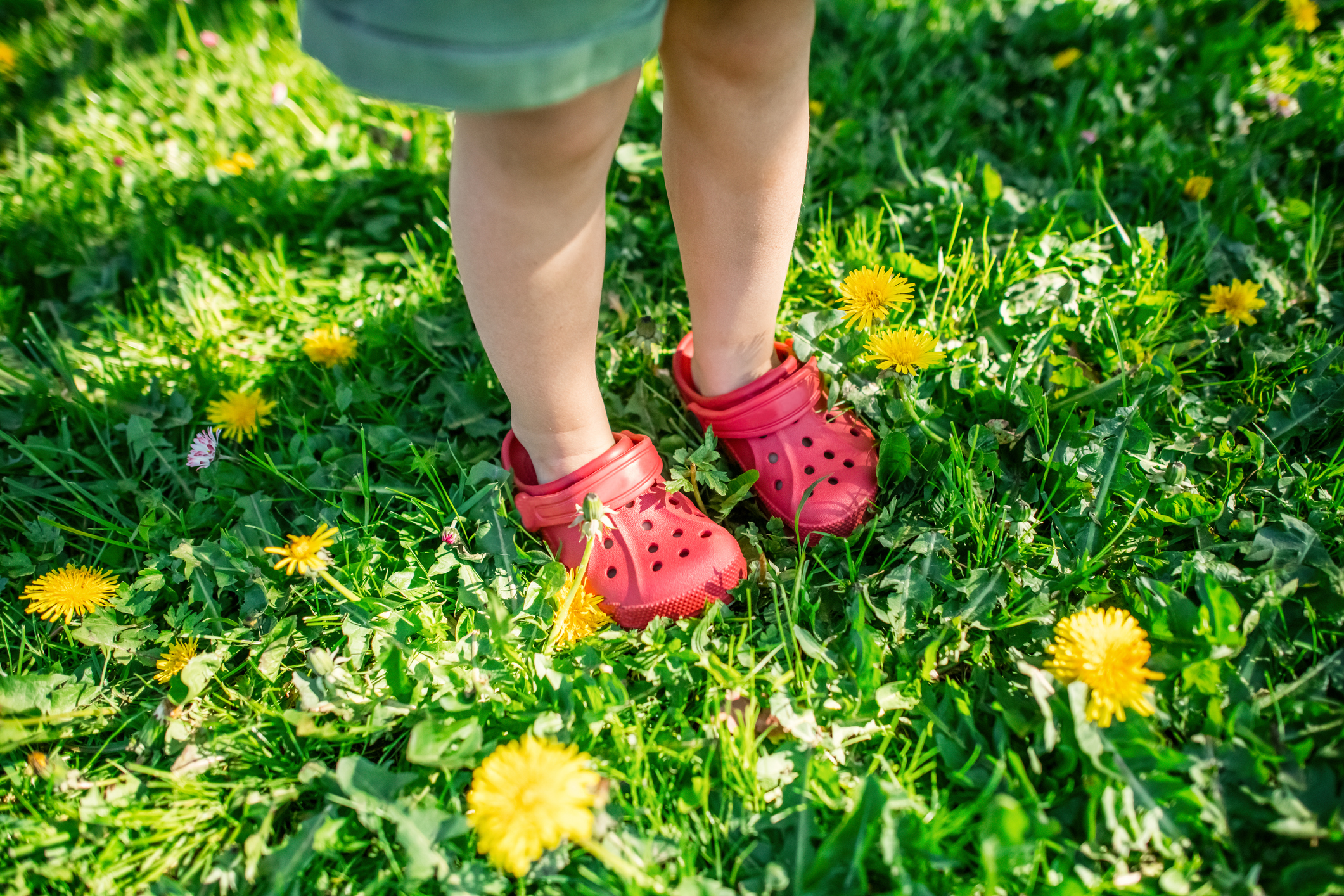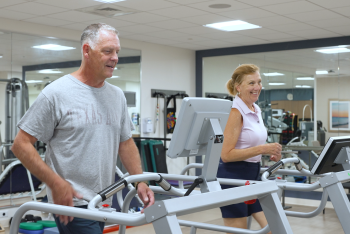Inspira Podiatrists share simple but often overlooked ways to care for your feet—from walking on the...
Read More
Crocs have become a staple for children and adults in many households, thanks to their colorful designs, convenient slip-on style and undeniable comfort. But are these popular shoes a smart choice for growing feet?
Parents and caregivers may wonder if Crocs provide enough support for foot development or if they could contribute to long-term podiatry issues. Let’s explore the pros and cons of Crocs for kids and what to consider when choosing footwear for healthy foot growth.
Crocs offer several benefits that make them a favorite among both kids and parents. “They are lightweight and breathable, which helps keep feet cool and reduces sweat buildup, especially in warm weather, which can decrease the risk of fungal infections,” said David Schrieber, D.P.M., a podiatrist at Inspira Medical Group. Their easy slip-on design makes them convenient for children still learning to dress themself, and their water-resistant material makes them easy to clean—ideal for messy play or beach outings.
Another advantage is their large and roomy toe box, which can benefit kids with wider feet or those prone to blisters from tighter shoes. The foam construction provides a cushioned feel, making them comfortable for casual wear.
Despite their comfort, Crocs have some drawbacks, particularly with foot support and stability. “They lack proper arch support, which is essential for growing feet, especially for kids who are active or on their feet for extended periods,” said Dr. Schrieber. “Their loose fit can also lead to instability, increasing the risk of trips and falls, especially for younger children still developing balance and coordination.”
Crocs are not ideal for high-impact activities like running, jumping or climbing, as they do not provide the necessary stability and protection. “Even with the back strap, heel slippage can be an issue, causing children to grip their toes inside the shoe to keep them in place, which may lead to foot fatigue, formation of biomechanical deformities like hammertoes and flat feet, or even impact their natural gait over time,” said Dr. Schrieber.
While Crocs can be great for quick errands or water play, they shouldn’t replace supportive everyday footwear. They are designed for convenience rather than long-term wear, so they may not provide the support needed for developing feet. Here’s what to keep in mind when selecting shoes for kids:
Crocs can be a fun and functional choice for kids in the right situations—like a day at the beach or a quick trip outside. “For long-term wear and activities that require stability and support, structured shoes are a better option,” said Dr. Schrieber. Parents should balance convenience with foot health, ensuring their little ones have the appropriate footwear for every occasion. If in doubt, talking to a pediatric podiatrist can provide personalized recommendations for growing feet.

Inspira Podiatrists share simple but often overlooked ways to care for your feet—from walking on the...
Read More
Learn effective strategies for safely managing corns, from gentle exfoliation and choosing...
Read More
Most people experience foot pain at some point in their lives, but it is important to know when to...
Read More